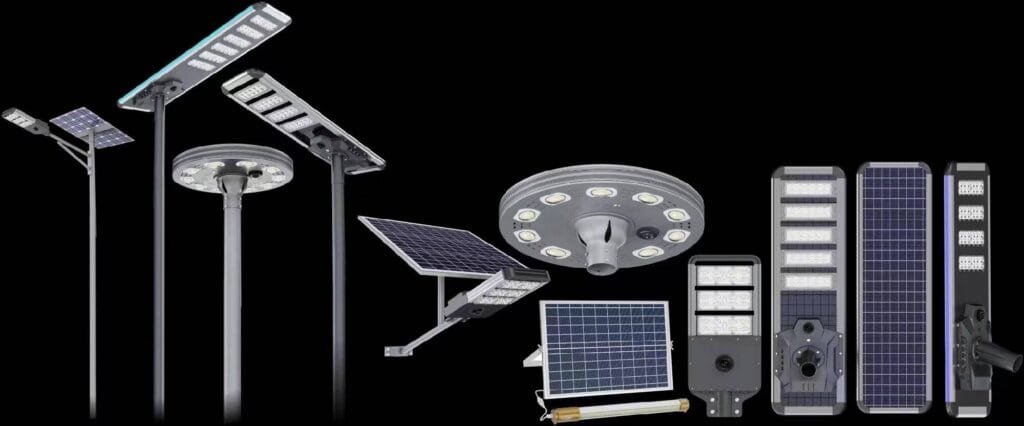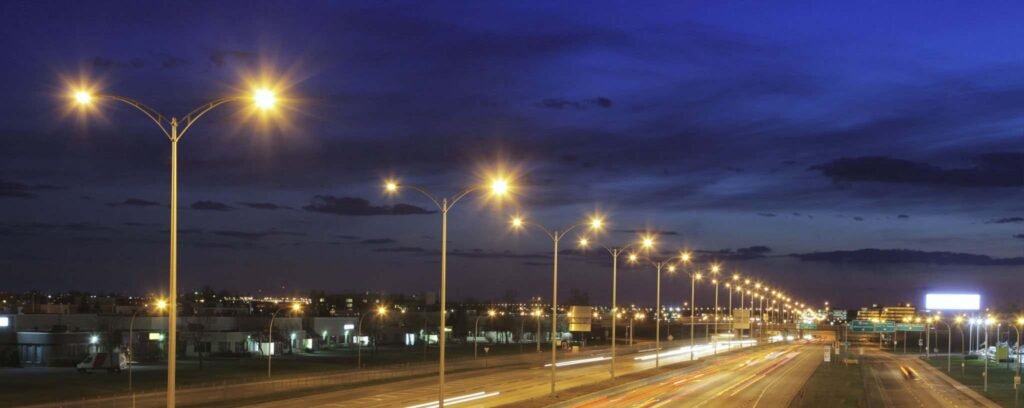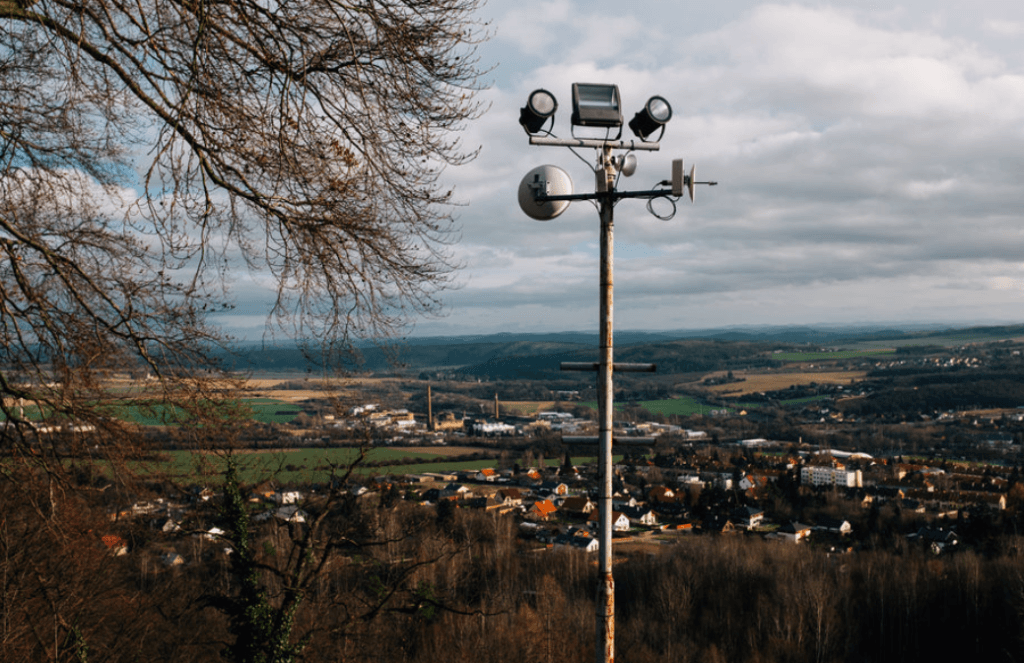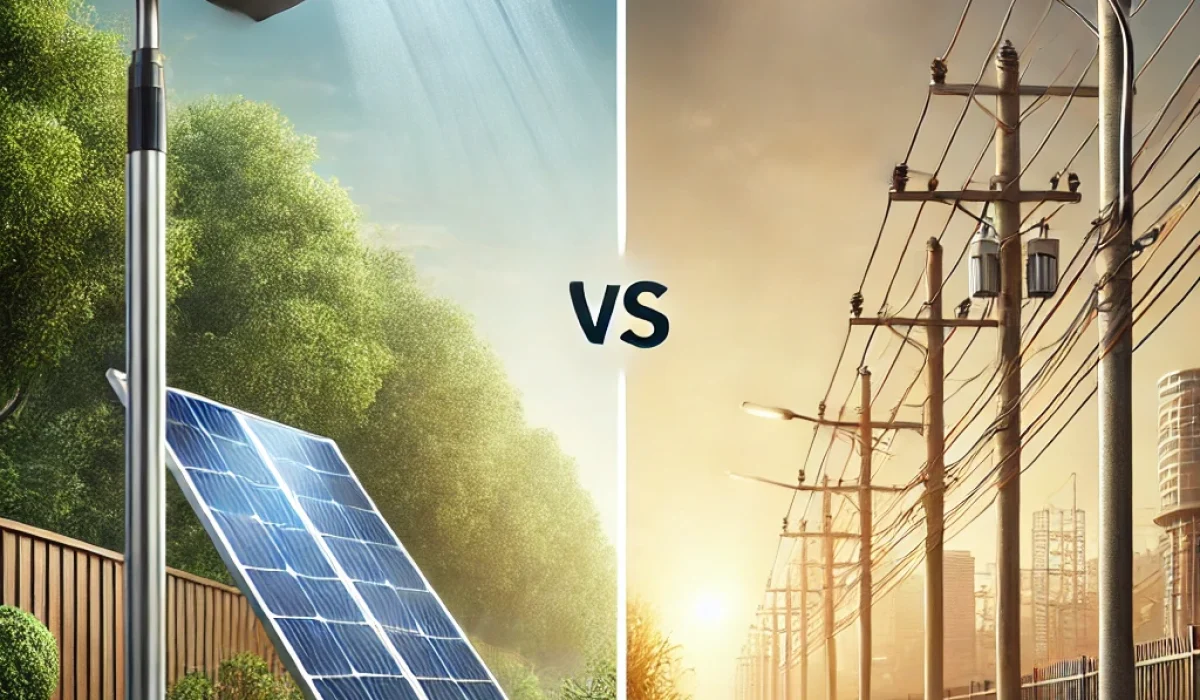All-in-one solar lamps offer energy efficiency, easy installation, and sustainability, while utility-powered street lights deliver consistent power but come with higher operational costs. Understanding the differences will help you choose the best solution for your project.
Choosing the right lighting solution for your project can be challenging, especially when deciding between modern solar lamps and traditional utility-powered street lights. Both options have distinct benefits and limitations, but the right choice depends on your specific needs and conditions. This guide will compare all-in-one solar lamps and utility-powered street lights, helping you make an informed decision that balances cost, efficiency, and sustainability.
1. What Are All-in-One Solar Lamps and Utility-Powered Street Lights?
Before comparing the two options, it’s important to understand their basic functionalities.
All-in-One Solar Lamps
- How they work: These lamps integrate solar panels, batteries, LED lights, and a controller into a single unit. They store solar energy during the day and use it to power the light at night.
- Key features: Completely off-grid, easy to install, and powered by renewable energy.
Utility-Powered Street Lights
- How they work: These street lights are connected to the electrical grid and rely on consistent power supply to function.
- Key features: Deliver continuous lighting but require significant infrastructure for installation and operation.
Why it matters:
Understanding the functionality of these two systems helps identify which is more suitable for your environment and application.

2. Cost Comparison: Upfront and Long-Term
All-in-One Solar Lamps:
- Upfront Cost: Typically higher due to the inclusion of advanced solar panels and batteries.
- Operational Cost: Minimal, as they rely on free solar energy and require no electricity bills.
- Maintenance Cost: Low, but batteries may need replacement every 5–10 years.
Utility-Powered Street Lights:
- Upfront Cost: Lower, as the light units themselves are less complex. However, installation costs can be high due to wiring and electrical connections.
- Operational Cost: High, as electricity bills accumulate over time.
- Maintenance Cost: Medium to high, including repairs to wiring and bulbs.
Which is better?
All-in-one solar lamps are more cost-effective in the long run, while utility-powered street lights may be suitable for areas where grid electricity is affordable and reliable.

3. Performance and Efficiency
All-in-One Solar Lamps:
- Energy Efficiency: Extremely efficient, as they utilize renewable solar energy.
- Performance: Dependent on sunlight; may not perform optimally in areas with low solar exposure or during long cloudy seasons.
- Lighting Duration: Equipped with advanced batteries, most models provide up to 10–12 hours of light per charge.
Utility-Powered Street Lights:
- Energy Efficiency: Low compared to solar lamps, especially if using traditional bulbs.
- Performance: Delivers consistent lighting regardless of weather conditions, as long as there’s no power outage.
- Lighting Duration: Operates for as long as needed, depending on the power source.
Which is better?
If you need consistent lighting and are in an area with unreliable sunlight, utility-powered street lights might be a better option. However, for sustainable and efficient lighting in sunny regions, all-in-one solar lamps outperform.

4. Environmental Impact
All-in-One Solar Lamps:
- Eco-Friendly: Zero carbon emissions during operation, as they run entirely on solar energy.
- Sustainability: Made from recyclable materials and designed to minimize environmental impact.
Utility-Powered Street Lights:
- Eco-Friendly: Dependent on the energy source—grid-powered lights may use electricity generated from fossil fuels, increasing carbon emissions.
- Sustainability: Requires extensive infrastructure that impacts the environment.
Which is better?
If reducing your carbon footprint is a priority, all-in-one solar lamps are the clear winner.
5. Applications and Suitability
All-in-One Solar Lamps:
- Best suited for:
- Rural and remote areas without access to electricity grids.
- Smart city projects focused on sustainability.
- Temporary lighting for events or construction sites.
Utility-Powered Street Lights:
- Best suited for:
- Urban areas with existing grid infrastructure.
- Locations requiring 24/7 lighting, such as highways, industrial zones, and tunnels.
- Projects with high power demands that solar energy cannot meet.
How to choose:
Evaluate your site conditions, including access to grid electricity, environmental goals, and the duration of lighting required, to determine the best solution.

6. Maintenance and Lifespan
All-in-One Solar Lamps:
- Maintenance: Low, with minimal components to monitor. Batteries may require replacement every 5–10 years.
- Lifespan: Solar panels typically last 20–25 years, while LEDs and batteries last 5–10 years.
Utility-Powered Street Lights:
- Maintenance: Medium to high, as electrical wiring, bulbs, and connections may degrade over time.
- Lifespan: Traditional bulbs last 1–2 years, while LEDs last up to 10 years.
Which is better?
All-in-one solar lamps require less maintenance and offer longer lifespans for key components, reducing hassle and costs.
Conclusion:
Choosing between all-in-one solar lamps and utility-powered street lights depends on your project’s needs, location, and long-term goals. All-in-one solar lamps are ideal for areas prioritizing sustainability, cost efficiency, and easy installation. On the other hand, utility-powered street lights are better suited for locations requiring consistent lighting with access to grid infrastructure.
By assessing your project’s budget, environmental goals, and lighting requirements, you can select the right solution to ensure efficient and reliable lighting for years to come.


